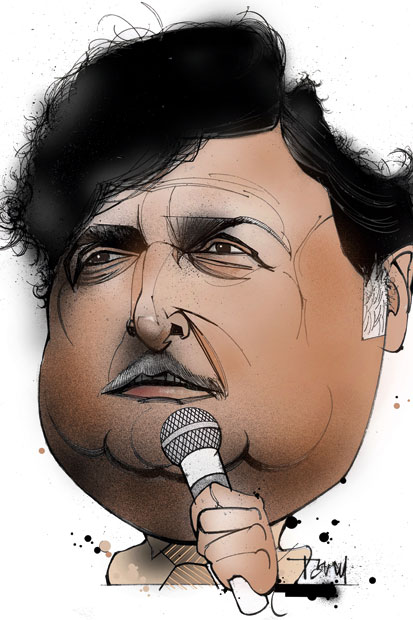Fifteen years ago, Sugata Mitra, a scientist from Calcutta, conceived of an interesting experiment. He went to a slum in Delhi, installed a computer into a public wall in the manner of a cash machine, then he waited to see what would happen.
As he had expected, the local children crowded round and began to experiment — but what he had not expected was how very quickly the kids mastered the basics of computing and began to search the internet for new areas of study.
Professor Mitra was astonished by how fast the kids learnt, especially given that they hardly spoke English. But as he observed the group, he realised one reason for their success: they were co-operating; reading in groups; solving problems together.
Mitra called his ‘hole in the wall’ computers self-organised learning environments (Soles) and went on to set up many others around the world. Soles and the research they gave rise to allowed thousands of poor Indian children to have an education, but Mitra also believes that, with a couple of tweaks, his methods could help to close the gap between state and public schools in Britain.
Professor Mitra is 62 now, a professor at Newcastle University, but when I meet him still speaks with great excitement about his Soles. Over and over again, the children who encounter them have exceeded his expectations, he says. He tells me that to test the limits of the method, he once issued computers loaded with information in English about biotechnology, to a group of Tamil-speaking 12-year-olds. ‘When I came back two months later, the children told me that they hadn’t learnt anything,’ Mitra says. ‘I was disappointed until one girl added: “Apart from the fact that improper replication of the DNA contributes to genetic disease, we’ve understood nothing else”.’
One thing missing from the Sole method of learning is praise. ‘Admiration is very powerful in nine and ten-year-olds,’ says Mitra. ‘I always say, “How on earth did you do that? That’s way beyond what your age should be able to do.”’ So, to bring in a little direction and encouragement while maintaining the self-sufficiency of the Sole system, Professor Mitra recruited an army of volunteers who dial in on Skype to encourage the children. This army of altruistic Skypers is known as ‘the granny cloud’, partly because many of them are retired teachers, and their job is to pose interesting questions and then praise the children on their findings. Children often take these disembodied ‘grannies’ into their confidence, asking for advice about careers or personal problems.
For a man who’s been explaining his ideas for so many years, Professor Mitra remains wonderfully enthusiastic. He started working in English classrooms eight years ago and thinks the Sole method could revolutionise our classrooms — even in sixth form. ‘A PhD student I know has been working with people who are 18 years old and barely out of jail,’ says Mitra. ‘They loved it that someone was willing to trust them and they were able to teach themselves.’ Partly on the evidence of this new research, Mitra also advocates the use of Soles in prisons and in the secure colleges for young offenders that the government’s setting up. ‘You can overcome the security concerns with a very simple piece of design: large screens,’ he says. ‘Then control happens very easily: just have someone who is generally around and keeping an eye on the screens.’
In some ways Soles are a great leveller: ‘It’s the kind of environment where the C-grader does very well,’ Mitra says. ‘It’s four average children producing the output of one really bright one.’ This is where he sees an opportunity for state pupils to close the gap with public school pupils. But he also cautions against the educational establishment’s maxim that everyone should get to an average standard in everything: Soles find that philosophy out. Children know each other’s strengths and they seek out whoever is best at maths or history, depending on the question. It means the cleverest students don’t necessarily get any better, but they do learn other skills such as communication and teamwork, which traditional learning sometimes sidelines.
Mitra’s system can be built into existing educational institutions with very little adaptation, he says: get rid of the old-fashioned computer labs and have fewer computers with larger screens so that children can collaborate. It’s important not to have too many computers, because then children don’t learn together. When he brought his first few Soles to England, the children loved it, telling him they had actually enjoyed quarrelling over the computers. ‘It’s a good example of how a reduction in resources can cause something nice to happen,’ he says.
Self-teaching doesn’t need to contradict the existing curriculum, but for it to be more than just an occasional teaching aid would require a change in the examination system, according to Mitra — and this is where his ideas might become a little too challenging for our educational establishment. He believes the internet should be allowed into the examination hall. ‘The examiner would need to ask questions that are much deeper, to which the internet doesn’t have the obvious answer.’ Using the internet to draw intelligent conclusions is the kind of modern skill that employers are looking for, he points out. ‘Change the environment and the assessment process, and that would very gently and quite quickly create a very profound change in the education system.’
That ‘gently’ is typical of Mitra; these days, conversations about education tend to descend into ideological fights. It’s a cheering experience to speak to this modest, optimistic man who’s quietly and efficiently transformed the lives of thousands.






Comments